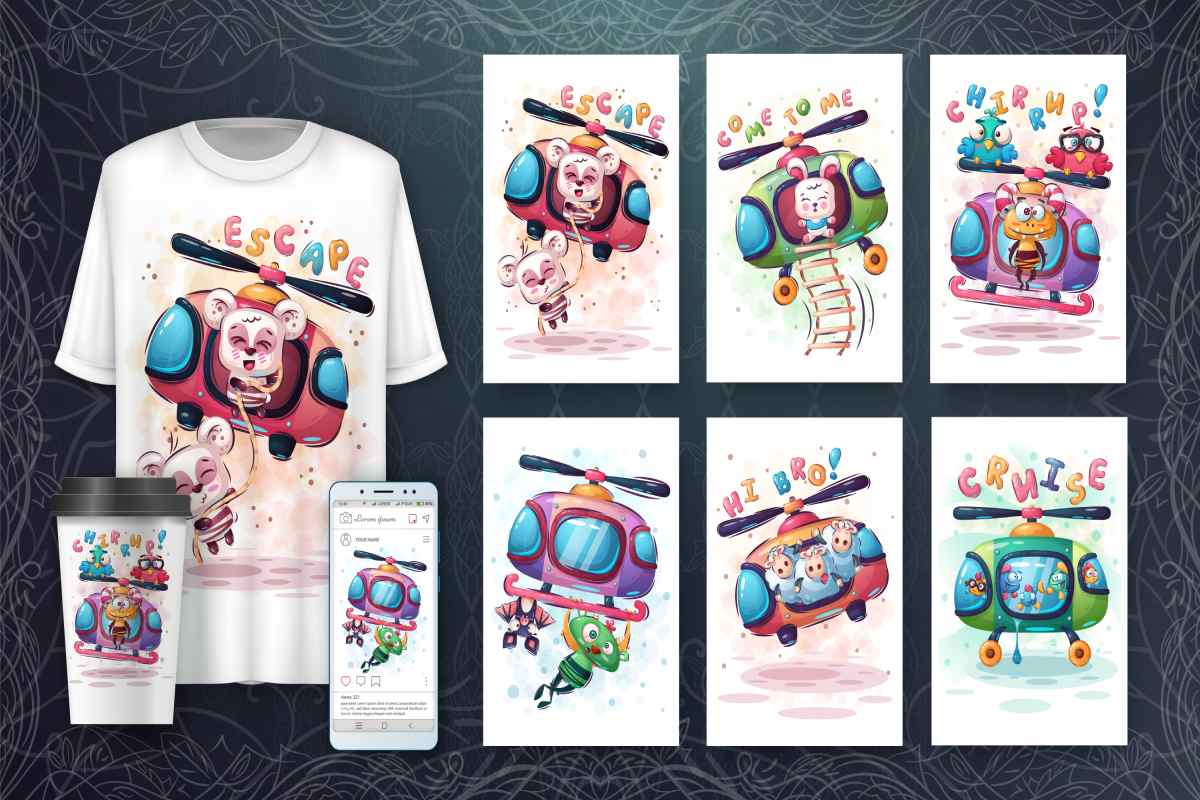
DTF Transfers vs. Screen Printing: A Quick Guide
Understanding the Basics of DTF Transfers and Screen Printing
In today’s apparel industry, businesses and creators are constantly looking for the most efficient, high-quality printing methods. Two popular methods stand out: DTF Transfers and screen printing. While both techniques deliver impressive results, DTF Transfers are increasingly becoming the go-to option for modern brands seeking flexibility and color precision. Screen printing, on the other hand, remains a reliable choice for bulk production with simpler designs. Understanding the foundation of each method helps brands make informed choices tailored to their production scale and design complexity.
DTF Gangsheet Builder vs. Manual Screen Setup
Traditional screen printing involves manual setup, including creating screens, aligning layers, and applying ink—a time-consuming process. In contrast, the DTF Gangsheet Builder allows users to digitally prepare multiple designs in one gangsheet layout. The DTF Gangsheet Builder simplifies workflow, minimizes setup time, and allows greater control over placement and arrangement. For print shops looking to maximize efficiency, gangsheet technology significantly reduces waste and shortens production time, especially for custom orders.
Faster Production with Upload DTF Gangsheet
With the introduction of the Upload DTF Gangsheet feature, turnaround times have drastically improved. Screen printing requires screen burning and ink drying time, whereas the Upload DTF Gangsheet function allows you to send your digital artwork directly to print, ready for heat application. This digital-to-press process not only speeds up the workflow but also reduces the risk of misprints. Small businesses and e-commerce sellers benefit greatly from this streamlined, upload-based approach.
DTF Transfer By Size vs. Standardized Screen Runs
One of the biggest drawbacks of screen printing is its fixed screen size and batch requirements. In contrast, DTF Transfer By Size lets users order transfers based on exact dimensions, avoiding excess material and overproduction. With DTF Transfer By Size, businesses can customize the print area for specific garment placements—pockets, sleeves, or full-back prints—without needing separate screens or templates. This flexibility is a major cost-saver and makes short runs more viable than ever before.
Print Quality and Fabric Compatibility: Who Wins?
When it comes to vibrancy and detail, DTF Transfers have the upper hand. These transfers offer full-color, high-resolution prints that adhere beautifully to a wide variety of fabrics. Unlike traditional screen printing, which can struggle with gradients and fine lines, DTF Transfers capture photographic details with ease. Additionally, while screen printing works best on cotton, DTF is compatible with blends, polyester, and even synthetic materials. This broader application range is essential for businesses offering diverse product lines.
Cost Analysis: Which Is More Budget Friendly?
The initial setup cost for screen printing is high due to screens, emulsions, and labor. While it becomes economical in large batches, it’s less practical for small runs. DTF Transfers, however, offer a low-entry barrier since they don’t require physical screens or extensive equipment. With digital tools like the DTF Gangsheet Builder, users can make the most of each sheet, printing only what’s needed. For startups and online shops, this makes DTF Transfers a cost-effective solution that balances quality with affordability.
Sustainability and Waste Management
Modern businesses are also looking at environmental impact. Screen printing involves chemicals, water usage, and ink waste that require special handling. DTF Transfers are cleaner by design. Especially when paired with digital solutions like the Upload DTF Gangsheet tool, waste is minimized, and production is optimized. Likewise, by using DTF Transfer By Size, users can order only what they need, reducing excess inventory and unused material. The eco-conscious nature of DTF makes it an attractive choice for forward-thinking brands.
Conclusion
While screen printing still holds value for certain applications, DTF Transfers clearly offer advantages in flexibility, speed, and detail. Tools like DTF Gangsheet Builder and Upload DTF Gangsheet further elevate this method by optimizing workflow and reducing errors. Additionally, the ability to print using DTF Transfer By Size adds scalability and customization power for businesses of all sizes. As demand for rapid customization grows, DTF is poised to become the industry standard for smart apparel decoration.
Frequently Asked Questions
- What are DTF Transfers?
- DTF Transfers are heat-applied print films that allow full-color designs on various fabrics using a digital process.
- Is screen printing still useful?
- Yes, screen printing is still widely used for high-volume, simple-design printing on cotton fabrics.
- What is the DTF Gangsheet Builder used for?
- It allows users to arrange multiple designs on a single sheet for optimized DTF production.
- How does Upload DTF Gangsheet speed up printing?
- It enables direct upload of pre-made designs, eliminating the need for manual layout and saving time.
- Is DTF better for small batch orders?
- Yes, DTF is ideal for small runs, especially with tools like gangsheet builders and direct upload systems.
- How does DTF Transfer By Size help reduce cost?
- It allows you to print only the area needed, saving on material and avoiding overproduction.
- Which printing method is more eco-friendly?
- DTF printing generally produces less waste and uses fewer chemicals than traditional screen printing.
- What fabric types are compatible with DTF?
- DTF works on a wide range of fabrics, including cotton, polyester, and blends.
- Do I need special equipment for DTF?
- Only a DTF printer, adhesive powder, and heat press are required—no screens or emulsion.
- Is color accuracy better with DTF?
- Yes, DTF supports high-resolution, full-color images with excellent color vibrancy and detail.






